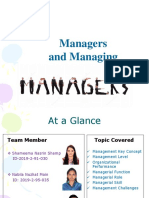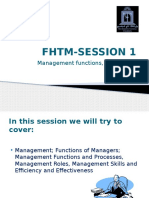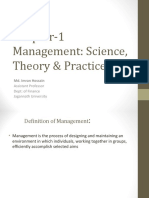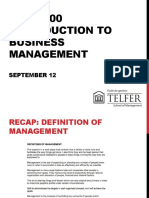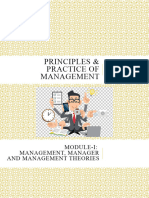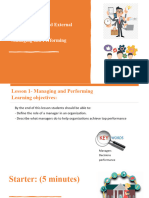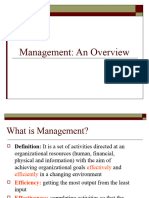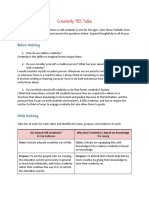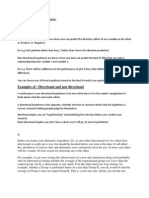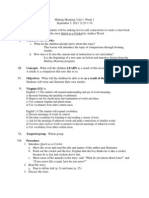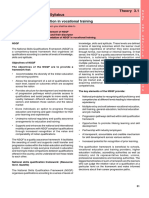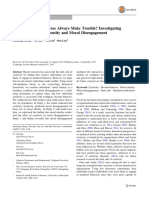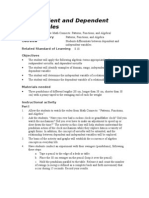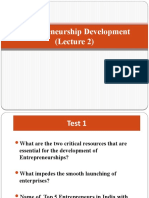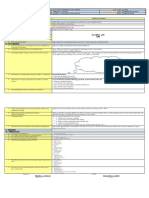0% found this document useful (0 votes)
129 views48 pagesMfe - Module 1
This document discusses an introduction to management theory course for engineers. It provides definitions of management from various scholars and outlines some key management functions including planning, organizing, staffing, directing, coordinating, and controlling. It also discusses the importance of management and different levels of managers such as top-level managers who make major decisions and middle-level managers who serve as a link between executives and front-line supervisors.
Uploaded by
Sethukrishnan mCopyright
© © All Rights Reserved
We take content rights seriously. If you suspect this is your content, claim it here.
Available Formats
Download as PDF, TXT or read online on Scribd
0% found this document useful (0 votes)
129 views48 pagesMfe - Module 1
This document discusses an introduction to management theory course for engineers. It provides definitions of management from various scholars and outlines some key management functions including planning, organizing, staffing, directing, coordinating, and controlling. It also discusses the importance of management and different levels of managers such as top-level managers who make major decisions and middle-level managers who serve as a link between executives and front-line supervisors.
Uploaded by
Sethukrishnan mCopyright
© © All Rights Reserved
We take content rights seriously. If you suspect this is your content, claim it here.
Available Formats
Download as PDF, TXT or read online on Scribd
/ 48





